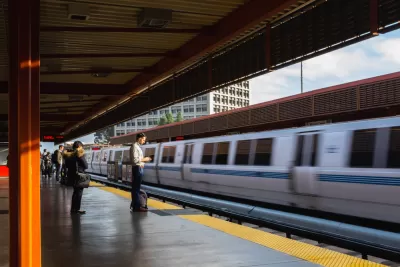A recent study by the Transit app reveals which communications methods are the most and least effective at reaching demographic groups representative of transit riders.

A new report by the Transit app examines the reach of communications channels—e.g., the Transit app, social media, emails, etc.—in reaching transit riders with critical information like service changes, fare payment, and mask mandates. The findings inspire a provocative headline for a blog post explaining the report's findings: "Transit Twitter isn't real life."
When communication channel reach is sorted by income and race in the United States, social media and public meetings fail the equity test of reaching representative populations of riders. Apps, signage, and customer support phone lines, it turns out, are more effective for reaching low-income riders and people of color.
For example, "social media is 3.5x more popular with high-income riders than low-income riders," according to the article. Twitter is the least representative of all: "High-income riders were 7.8x more likely to use Twitter for transit information than low-income riders and 2.1x more likely to use Instagram, whereas Facebook had a near-even split."
The communications findings are a component of the Transit app's larger quarterly Rider Happiness Benchmarking survey, which surveyed 21,000 transit riders across United States about their public transit experience.
A lot more detail on effective, equitable transit communications are included in the source article linked below.
FULL STORY: Transit Twitter isn’t real life

Alabama: Trump Terminates Settlements for Black Communities Harmed By Raw Sewage
Trump deemed the landmark civil rights agreement “illegal DEI and environmental justice policy.”

Planetizen Federal Action Tracker
A weekly monitor of how Trump’s orders and actions are impacting planners and planning in America.

Why Should We Subsidize Public Transportation?
Many public transit agencies face financial stress due to rising costs, declining fare revenue, and declining subsidies. Transit advocates must provide a strong business case for increasing public transit funding.

Understanding Road Diets
An explainer from Momentum highlights the advantages of reducing vehicle lanes in favor of more bike, transit, and pedestrian infrastructure.

New California Law Regulates Warehouse Pollution
A new law tightens building and emissions regulations for large distribution warehouses to mitigate air pollution and traffic in surrounding communities.

Phoenix Announces Opening Date for Light Rail Extension
The South Central extension will connect South Phoenix to downtown and other major hubs starting on June 7.
Urban Design for Planners 1: Software Tools
This six-course series explores essential urban design concepts using open source software and equips planners with the tools they need to participate fully in the urban design process.
Planning for Universal Design
Learn the tools for implementing Universal Design in planning regulations.
Caltrans
Smith Gee Studio
Institute for Housing and Urban Development Studies (IHS)
City of Grandview
Harvard GSD Executive Education
Toledo-Lucas County Plan Commissions
Salt Lake City
NYU Wagner Graduate School of Public Service




























